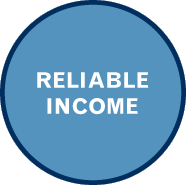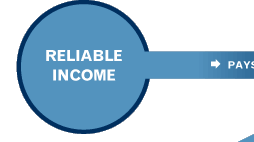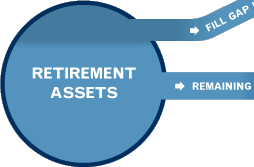
Needs
These are essential expenses you must meet. You should categorize “needs” based on your own values and priorities. For example, some people view donating to a charity a necessity, while others might not. Examples of needs include mortgage or rent payments, groceries, household utilities, auto maintenance and fuel, health insurance premiums and prescription expenses.

Wants
These are expenses that are nonessential, but ideal in retirement. Your “wants” are based on your vision of retirement. For example, traveling to visit family may be a necessity; while the additional expense of taking an annual trip to Europe might be a “want.” Other examples might include dining out, entertainment, recreation and gifts.

Reliable Income
This represents sources of consistent income you receive monthly or annually that will be used to cover your expenses in retirement. Examples include Social Security, pension payments and income from part-time employment.

Retirement Assets
This is an inventory of your financial assets, particularly those you designate to fund your retirement. Income from these assets can supplement your reliable income. Examples include 401(k) plans, IRAs, Roth IRAs, checking accounts, bank savings/deposits, CDs, brokerage accounts and annuities.




